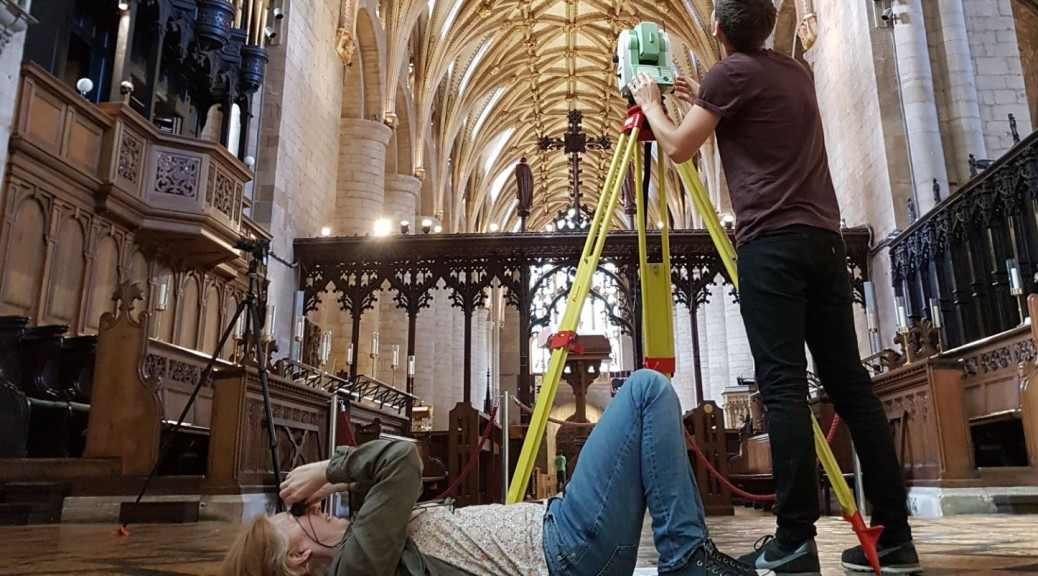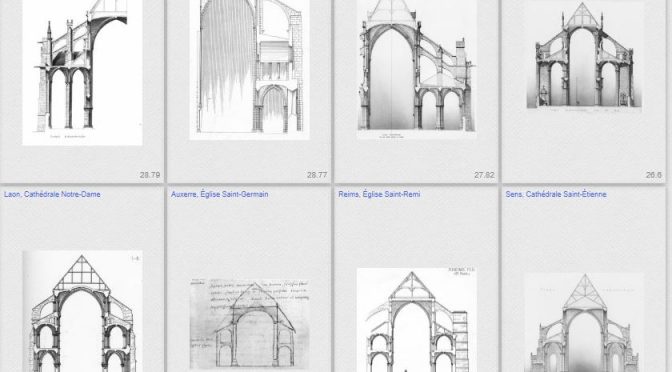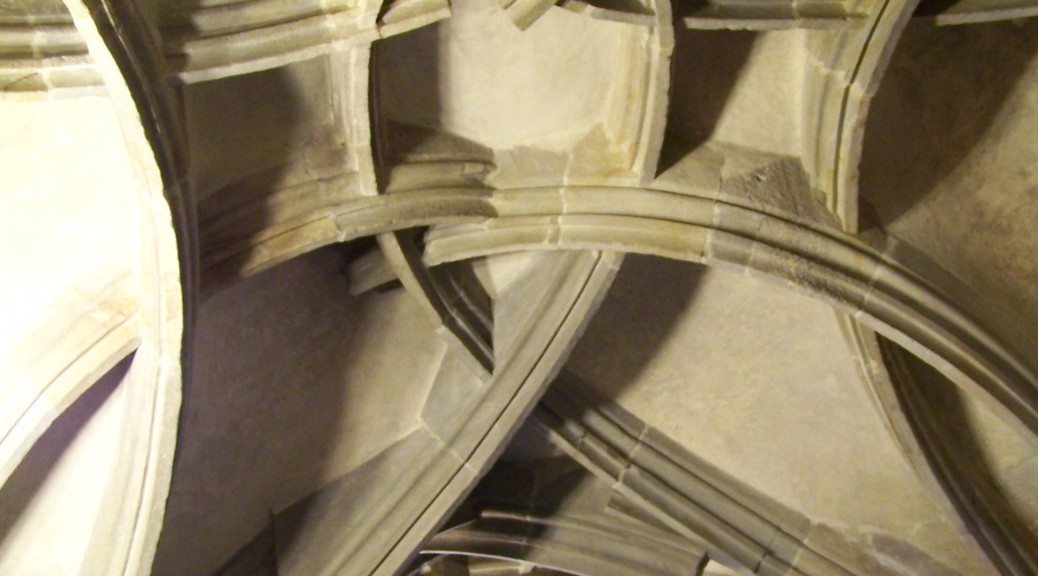In July 2017, we travelled to Tewkesbury Abbey and Gloucester Cathedral to create digital surveys of their respective vaults. First, we surveyed the abbey at Tewkesbury using our standard methods of laser scanning and photogrammetry, with the additional method of total station for the choir vaults. Total station surveying enables us to manually capture specific points of the vault ribs, as opposed to laser scanning which captures all points. Searching for specific points to document using total station is very labour intensive, particularly when trying to capture the vaults above. Based on advice from our friend David Wendland, who is carrying out exciting research on vaults in continental Europe, we worked in a pair with one of us roughly locating points using the total station’s laser, and the other laying on the floor looking up at the vaults through a pair of binoculars to locate the precise point that needed to be documented. This was a particularly long and arduous task over a day and a half, however, the resulting points mean we can very quickly and efficiently use the specific points documented to trace the vault rib geometries. Laser scanning, on the other hand, is much more time consuming in locating the required points amongst many million others to trace them. Both methods create accurate results and therefore having two sets of data ensures an even higher level of confidence in our methodology and findings. Once we completed our surveying, we backed up our data and travelled to Gloucester Cathedral to start the second phase of our field trip. We also found time in between to visit Pershore Abbey, where we already have access to a laser scan survey to investigate the vault geometries there. This scan data was very generously given to us to use by the abbey to use for our research, and we hope to be able to show are results of this in the next year. The Pershore Abbey laser scanning was particularly high in its quality, surveyed by CGD Ltd.
At Gloucester we continued with our primary method of laser scanning to survey the majority of the cathedral’s vaults, with particular attention given to the west end, transepts, crossing, choir and presbytery vault bays. Whilst at Gloucester, we were able to use our scan data to assist the cathedral architects in the installation of a new disabled platform to the east end as part of HLF funded Project Pilgrim, by linking scans from the crypt to those above to build up a very detailed picture of how the spaces connect, which was previously not accurate enough. This demonstrates how our survey data can be used by other stakeholders for mutual gain.
We are very grateful for the Liverpool School of Architecture’s David Foster Wicks endowment fund, which funded the field work and has enabled us to continue developing our research for Tracing the Past.


